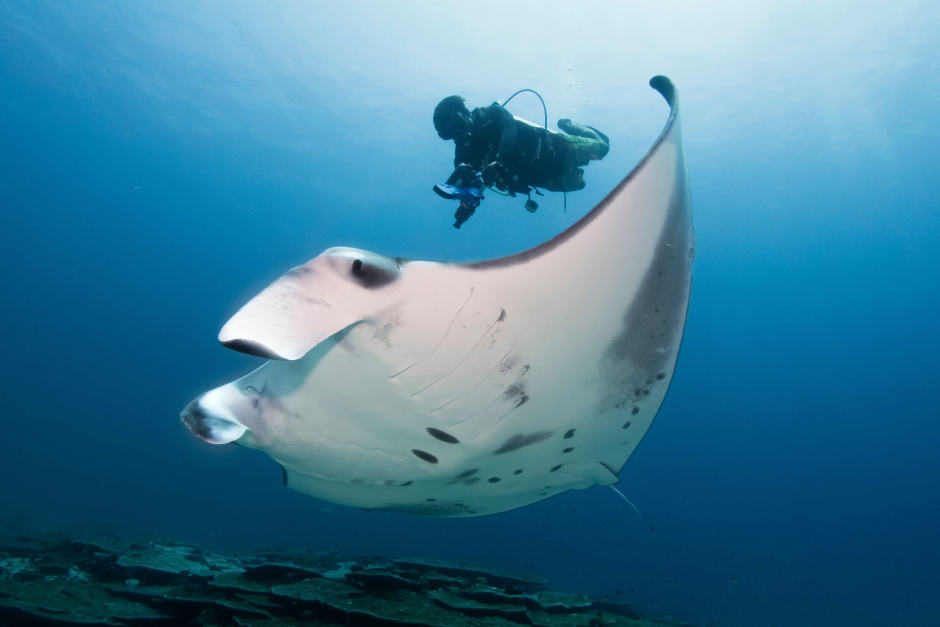
Designed, developed and manufactured by IMV imaging and field tested on wild reef manta rays by scientists from the Manta Trust and Cambridge University Veterinary School, the Duo-Scan:Go Oceanic can be taken to water depths of up to 30m for real-time scanning.
Debra Malcolm, UK & International marketing manager, IMV Imaging, told The Engineer via email that viable imagery can be obtained by getting within 10-20cm of a target object. Once in position, ultrasound can penetrate to a depth of 24cm.
IMV imaging’s SoundLink wireless technology relays imagery between the transducer and viewing screen on a smartphone contained in a waterproof housing. Malcolm added that the system can be used for 2.5 hours or longer, depending on scanning conditions.
Previous attempts to use ultrasonography on wild animals in water required scuba divers to take conventional scanners underwater in waterproof housings, often trailing cables attached to bulky viewing screens. A scanner used in recent ultrasound research on wild whale sharks by the Galapagos Whaleshark Project was reported to weigh 17kg, whereas the Duo-Scan: Go Oceanic dive rig used in field tests weighs 1.8kg.
“Our team of…engineers had to ensure the device was durable enough to be taken to the same depths as recreational scuba divers, manoeuvrable enough to aid the diver in scanning but not so flexible that strong ocean currents would inhibit is functionality,” said Alan Picken, chief executive of IMV imaging. “It was a delicate balance and a great feat of engineering.”
“What we are really excited about is the contactless nature of this technology. There are significant benefits for animal welfare, but you also open up a whole range of possible applications if you can scan animals that ordinarily wouldn’t let you get close enough to touch them."
Researchers from the Manta Trust and Cambridge University Veterinary School verified the contactless technology works in field tests carried out in collaboration with the Vetsonic (UK) Ltd and Six Senses Laamu, a resort in the Maldives with a nearby population of reef manta rays.
“When the project began, none of the team knew whether scanning wild reef manta rays would even be possible. What has been achieved is beyond what we could have hoped for,” said Dr Guy Stevens, co-founder and chief executive of the Manta Trust. “More than just scanning a reef manta ray and proving that this contactless technology works, we were able to obtain the first ever scans of wild reef manta rays; pregnant and non-pregnant females, as well as mature males.”
Reef manta rays are rated ‘vulnerable’ on the IUCN’s Red List of Threatened Species and many gaps remain in understanding their ecology, including where they go to give birth and at what age and size females reach maturity. According to IMV Imaging, scanning these animals will provide necessary insights into their reproductive strategies, which is essential when developing effective conservation management plans.




Poll: Should the UK’s railways be renationalised?
Rail passenger numbers declined from 1.27 million in 1946 to 735,000 in 1994 a fall of 42% over 49 years. In 2019 the last pre-Covid year the number...